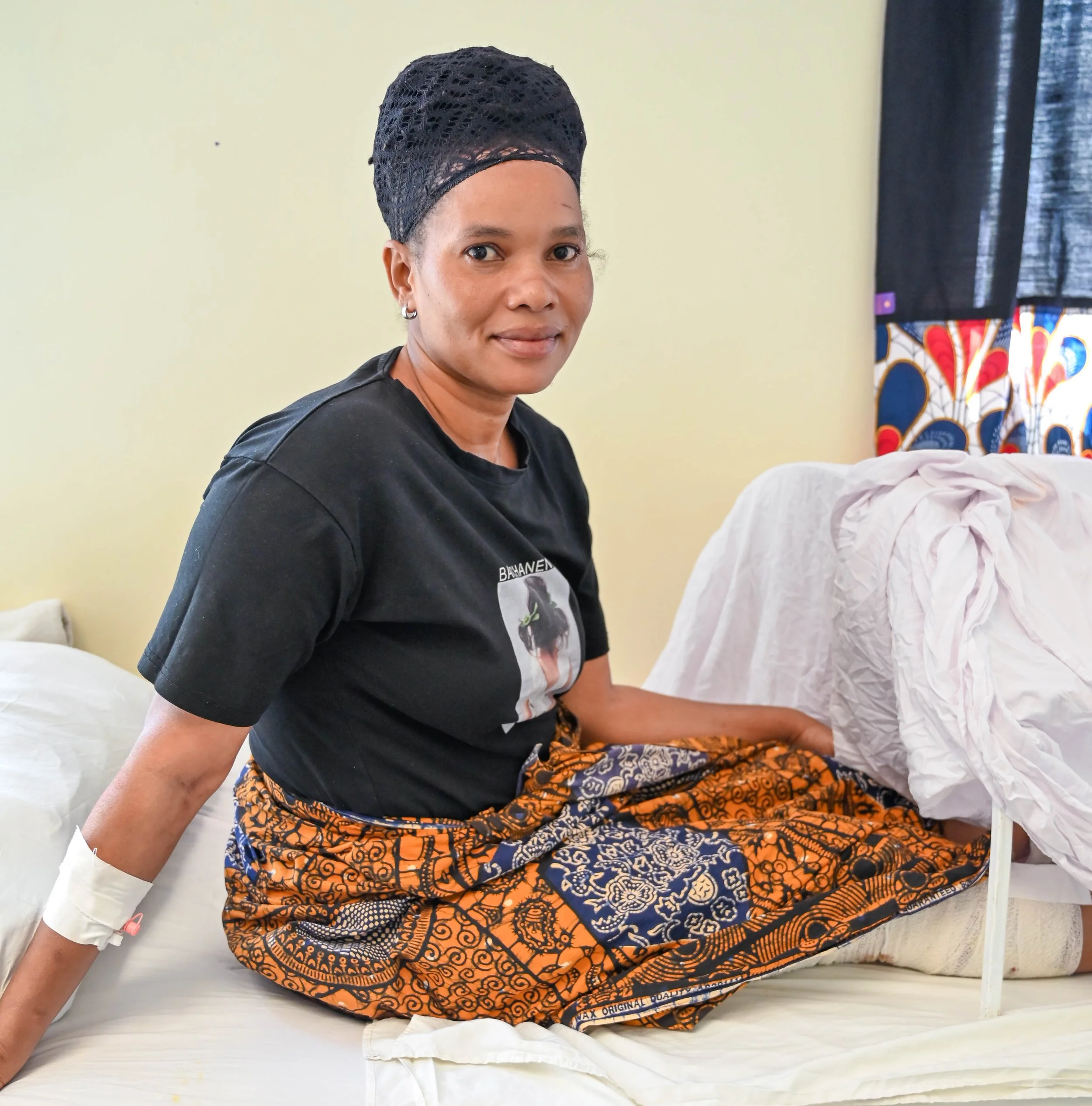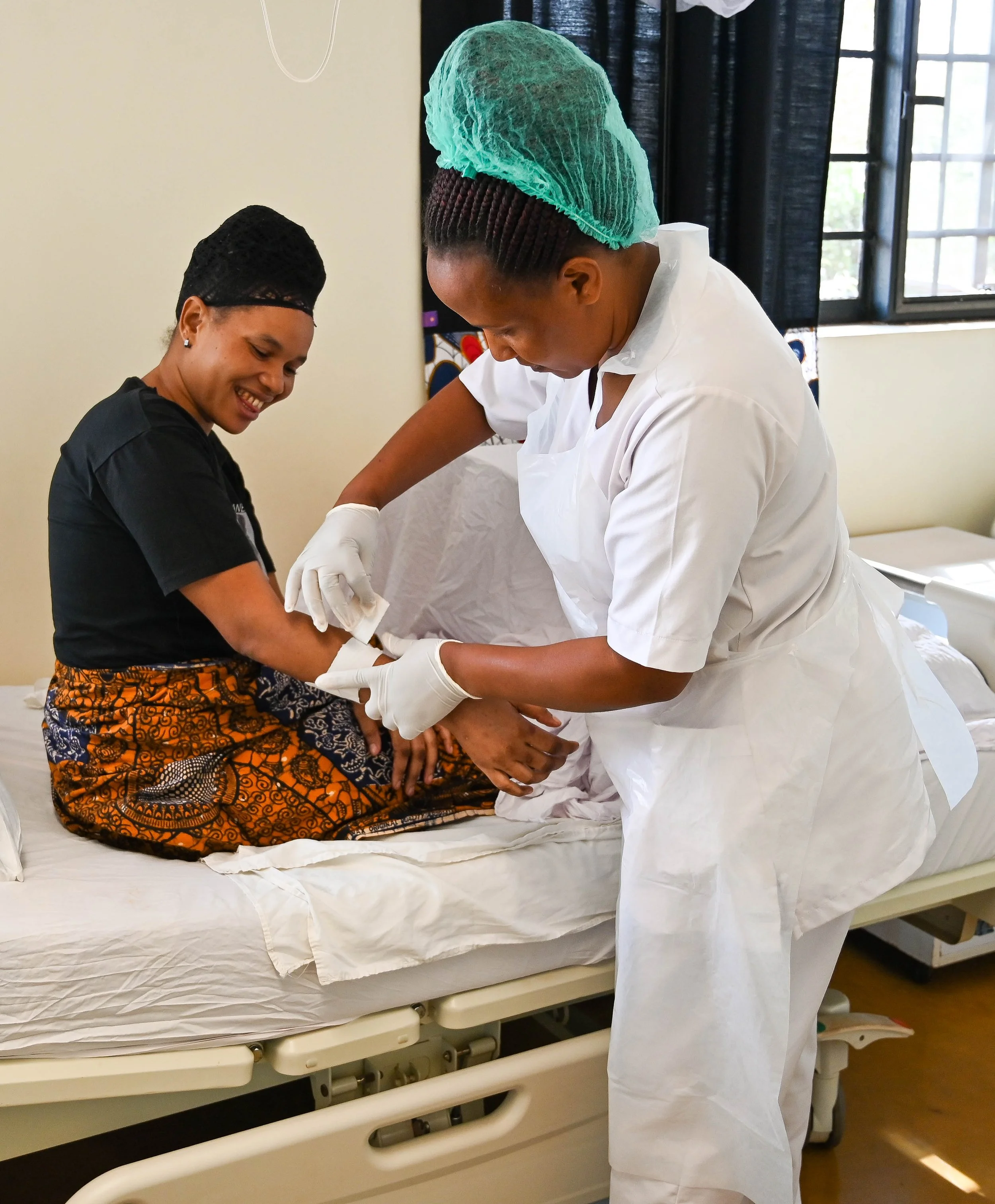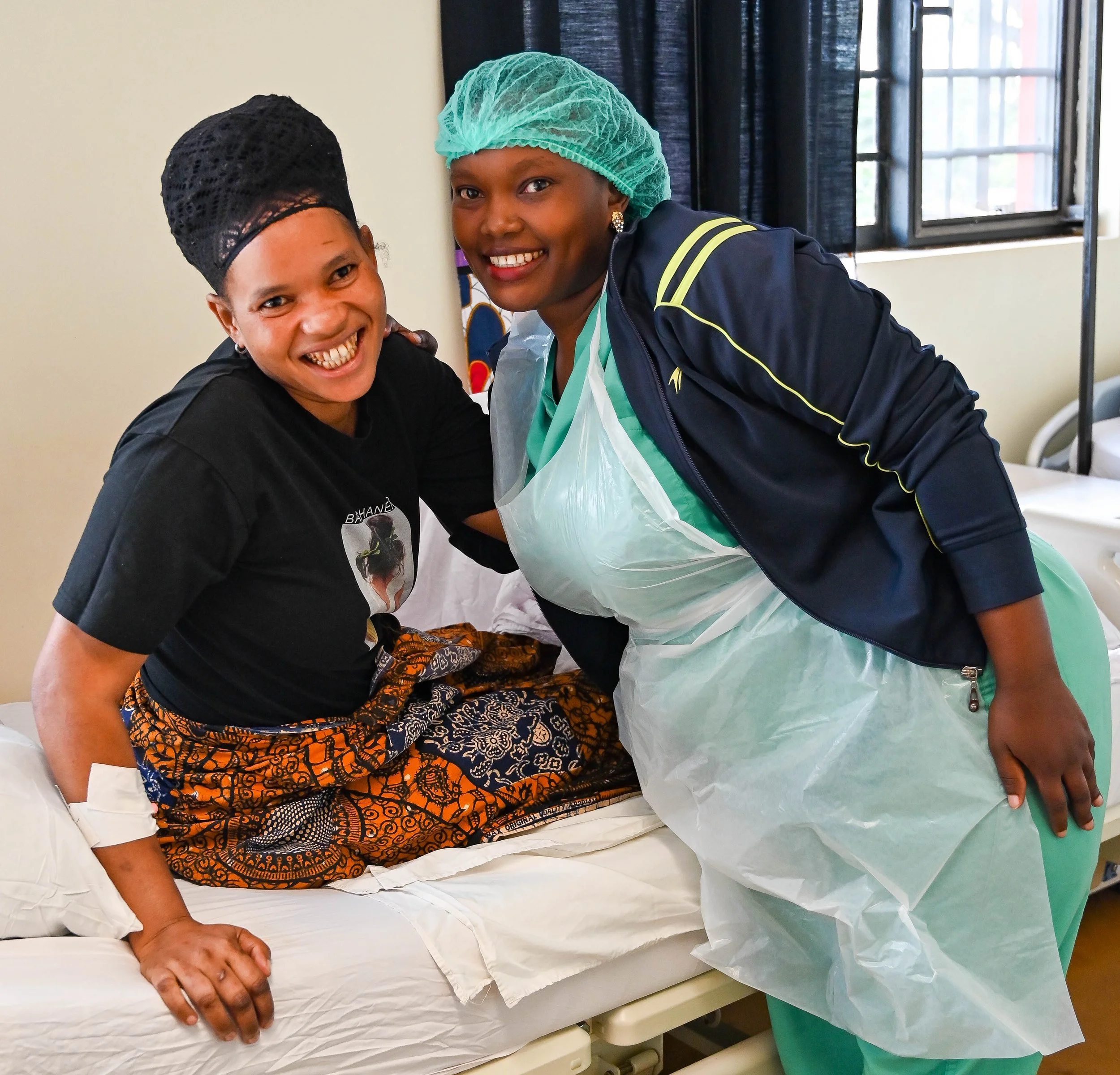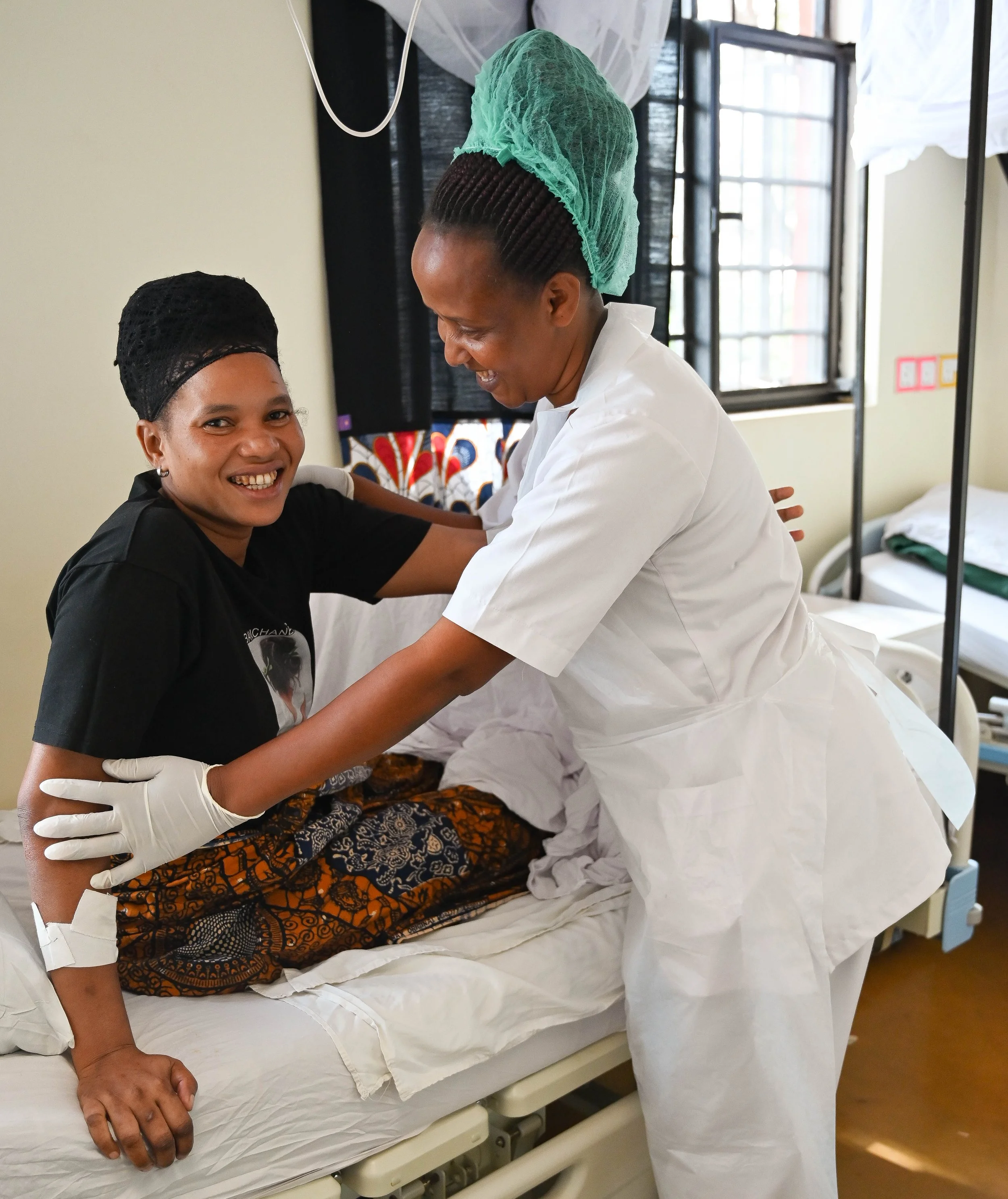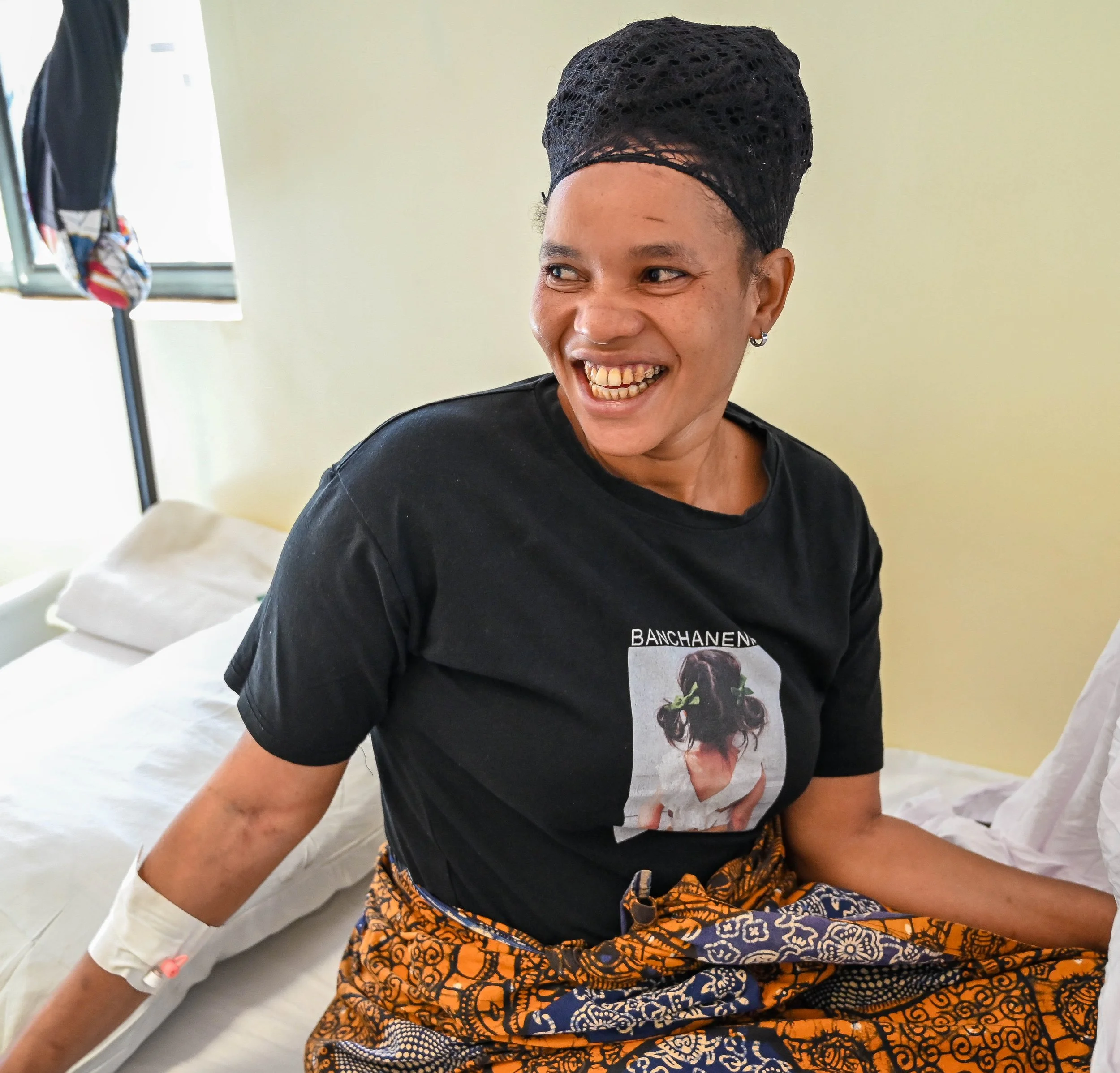While the holidays are a time of joy, family, comfort and home, illnesses and injuries do not take a break for any season. Every holiday season presents opportunities to embrace the spirit of connectedness that brings people together: families, friends and even people who don’t know each other. This week, FAME received Nancy, a patient who suffered severe burns at her workplace and could only make it to FAME for life-saving treatment with the help and support of her work family, ensuring that she survived her burns and would be able to celebrate the holidays with her son.
36-year-old Nancy* works in a restaurant in Mto Wa Mbu, a town 20 miles from FAME. The restaurant where she works is famous for its all-you-can-eat buffets and with it being the festive season, the buffets have peaked in popularity. As usual, it's Nancy’s job to set up the restaurant's buffet, which is available for 2-3 hours. To ensure that the food stays warm the entire time, the restaurant uses an apparatus, usually consisting of a metal dish with a heating appliance beneath it that contains methylated spirit (surgical spirit), which is 95% ethanol and 5% methanol, to keep the food warm.
“I set up the lunch buffet as I have done many times. As I lit up the heating appliance containing the methylated spirit, it slid off my hand and fell to the ground, where the spirit splashed on my dress. I wore a polyester dress, which immediately caught fire. I didn’t think the flames would spread so fast, but they did! I was screaming my head off, moving back and forth frantically, which in hindsight, was making the fire spread even faster. My colleagues quickly surrounded me and tried to put out the fire, but because of the type of fabric of my dress, it was sticking to the burnt flesh on my legs.”
When they finally put out the flames, Nancy’s co-workers rushed her to a local clinic. Her legs were terribly burnt. The local clinic injected her with a painkiller and asked that they take her to a hospital that could manage her condition because they could not care for her. The clinic explained that the burn care they could offer was scarce and of limited quality and they were not sure that the care they could provide would reduce disability or prevent mortality. Burn management is particularly challenging in resource-limited settings, where there are few trained providers, and medicine and supplies are not widely available for burn treatment.
Unfortunately, neither Nancy nor her colleagues could pay for the transport to get her to a hospital that could help. Nancy’s colleagues called their boss, who was not at the restaurant when the accident happened and updated him on the situation. They asked if he could organize transport to a hospital that could manage her critical case.
“My boss saved my life. Once he heard about the accident, he brought me to FAME in his car. He chose FAME as everyone in our area is familiar with this hospital and the work it does for our community. We all know of someone treated at FAME with good outcomes. I’m very thankful he brought me here; otherwise, my story would have had a tragic ending. Together with my colleagues, they were selfless and put my needs first and above all else, and for that, I’m very grateful.”
Ten hours after sustaining the burn injury on her legs and thighs, Nancy was received at FAME and offered timely access to safe burn care, starting with first aid, before being transferred to FAME’s inpatient ward for admission. She had suffered second-degree burns (burns that affect both the epidermis and the second layer of the skin, the dermis).
“My colleagues who accompanied my boss to FAME told me I was offered quick service, which saved my life. They said my legs were so burnt; they didn’t think I could ever walk again. The FAME team worked together to ensure I was comfortable and not in pain. Despite never having been to FAME before, they embraced me like family and treated me like one of their own.”
Fire-related burns from extreme temperatures remain a significant health problem, with over 95% occurring in low and middle-income countries, eleven times higher than in high-income countries (WHO). This often results in prolonged hospital stays, disfigurement, disability and death. Long-term morbidity is often a significant problem for burn survivors, creating suffering for the individual and their family.
“When I regained consciousness at FAME, I was in intense pain. The doctors assured me they were doing everything possible to save my legs. I was scared that if they didn’t, I would be unable to provide for my 15-year son. I am a single parent who needs to be able to walk and work to make a living.”
Nancy is now recovered and doing well. After almost three weeks in FAME’s inpatient ward, she is clinically stable, reports only mild pain and her wounds are healing well. She can now walk short distances but cannot bend her knees. The doctors have given her some light exercises to do when she returns home.
“I would like to advise my fellow workers in the hospitality industry to be extra vigilant. When you work with something for so long, you tend to forget it could be dangerous. As part of my job, I have been setting up the buffet consistently for the past eight years, and nothing bad has ever happened. I became complicit and careless as time passed, leading to my accident. This has been a horrific ordeal for my family and me. I am lucky that FAME has provided me with quality healthcare. Since the accident, my friends have told me many stories of people with badly healed burns due to lack of or poor wound care. FAME’s understanding of burn treatment has been a blessing to me.”
An ecstatic Nancy poses with Nurse Naserian John.
Nurse Nanyu Samweli with Nancy.
“After 20 days, I’m happy that I am finally going home today. I leave with the hope that I will get better and go back to work. I’m sad that I am leaving behind my newfound friends, the FAME medical staff. We have shared many laughs and they have consoled me through my lowest of lows. I will still be coming for a change of burn wound dressing, so I will still see them, which makes me very happy. Thank you, FAME staff, for the healthcare, friendship and everything!”
Through the compassion of her work family and the FAME family, what could have been a tragedy turned into a cherished holiday reminder of the healing power of togetherness.
*While the patient’s name has been changed to protect privacy, permission was secured to share her photos and story with FAME supporters and to raise awareness of available medical care at FAME Medical.

